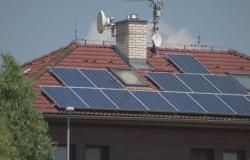The second year of the Healthy Landscape educational conference was organized by the Environmental Department of the Plzeň Region on Thursday, April 25, in the conference hall of the Plzeň Secondary Vocational School of Electrical Engineering. While in last year’s introductory year the main idea was primarily to acquaint the participants with the goal of the Healthy Landscape project, this year the organizers focused mainly on examples of good practice and presentations of current and planned projects.
Participants from the ranks of mayors, actors from priority areas where the Pilsen Region processes landscape studies, as well as environmental education coordinators from schools were initially welcomed by the Governor of the Pilsen Region, Rudolf Špoták, together with the father of the idea, the deputy for the environment and agriculture, Josef Bernard. “We already know today that our children and grandchildren will not experience the landscape as we knew it. We know that in the next thirty, fifty years our landscape will undergo a dramatic transformation. The landscape will be different, but it doesn’t have to be a bad place to live. And if we can manage this change, we are already influencing it today. Those projects are long-term and must be started now, and it depends on us whether the children and grandchildren will curse us in the future or say that we didn’t let them in.” said Josef Bernard and further remarked: “Today I see three approaches of people to climate change. The first one says, nothing is happening, then the second completely opposite one, who says, it’s in the bag and we won’t do anything with it, and then the third one, who says – something is happening, the landscape will change, and we have to change too. We have to change our habits, agriculture and, last but not least, adapt the landscape. And this conference is supposed to be a great inspiration for what to do on this topic.”
The conference hall at Vejprnická was full of guests. “The choice of listeners is important to us, because the mayors of the municipalities are the ones who often control all the events in the municipality, including the care of the countryside,” noted the head of the water management department, Jakub Rataj, who accompanied the entire program.
This year’s focus of the conference was practical. In the introduction RNDr. Lukáš Krejčí, PhD. presented the main problems of the landscape and the possibilities of their solution. The representatives of the Czech University of Agriculture then outlined some of the results of extensive research on the Amálie model farm, Jiří Papež from the State Land Office spoke about the possibilities of working with the landscape through land modifications. Ing. informed about the pilot project dealing with water retention on forest land in Brdy. Markéta Máchová from Military Forests and Farms of the Czech Republic, Mayor Luboš Hlačík from Chodová Planá talked about the general drainage, which the municipality had developed with the help of the Pilsen Region to solve the problems with polluted water in its territory. Zdeněk Myslík from AOPK said from what sources it is possible to implement a large part of the measures in the countryside.
The afternoon part of the conference was devoted to already implemented projects – both from the point of view of local governments and farmers. From Ing. Pavla Růžičky from the Pilsen Diocese, the audience learned about the restoration of the historic path with the avenue of fruit trees near Potvorov in northern Pilsen. Representative of the Agricultural Cooperative Klapý Ing. Otakar Šašek. Farmer Matouš Horák, who farms on the southern edge of the Brda PLA, where he manages a small farm and tries to work with respect for the surrounding environment, ended the conference attractively with his unique presentation.
But what is the Healthy Landscape of the Pilsen Region trying to achieve? At the very beginning, there was a conceptual document – the Regional Strategy of Adaptation Measures of the Pilsen Region for Retention of Water in the Landscape (RESAO). In this document, the first 20 so-called “priority areas” were identified, which the region will pay more attention to. “In these priority areas, we are gradually processing detailed landscape studies, the result of which is the proposal of specific measures. They will help the landscape adapt to climate change exactly where it is needed. Two studies are now in the near-completion phase – in Dobřansk in the Radbuza basin and Klatovsk in the Úhlava basin. In the other two areas, landscape studies are being processed and will be completed in January 2025,” said Jakub Rataj, stating that it is the Zlaté Potok basin in Přešticko and the Chuchly basin west of Holýšov. By the end of 2024, the plan is to announce a tender for probably one more study.
Municipalities and other entities that want to implement the proposed measures will continue to receive support for this. An advisory body is being established in the Pilsen region, whose task is to make it as easy as possible for those interested in measures to implement them. This advice will consist of assistance with, for example, finding the necessary experts, orientation in laws or finding a way of financing.
In addition to landscape studies and support for the subsequent implementation of measures, the region also began to deal with the brand Partner Zdravé krajina. As part of this brand, private entities can be involved in the care of the landscape, for example in the form of a financial contribution for the purchase of land suitable for transfer to protected areas.
Another activity associated with a Healthy Landscape is education. The Pilsen region organizes events in schools or kindergartens, participates in conferences and other events, where it passes on its experience. Websites and social networks are also part of awareness. As part of the Implementation Group platform, current information is then exchanged with experts and the further direction of the Healthy Landscape project is discussed. Among these experts are, for example, representatives of the Nature and Landscape Protection Agency, the Vltava River Basin, the State Land Office, the Pilsen Bishopric and others. “We have been developing the Pilsen region with this project for three years. We mapped the entire territory of the Pilsen region in detail and defined priority areas where we would like to adapt and modify the landscape so that it is better adapted to the climate changes that await us in the future. In essence, this means more waterlogging, a higher diversity of forests, we can build various draws, alleys, roads, but we primarily focus on retaining water in the landscape. The project is groundbreaking in that it does not try to do something in isolation only in the Pilsen region, but involves individual municipalities, mayors, citizens and companies,Josef Bernard drew attention to the uniqueness of the Healthy Landscape project.







